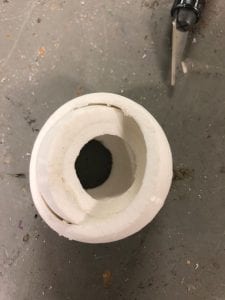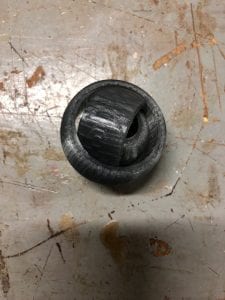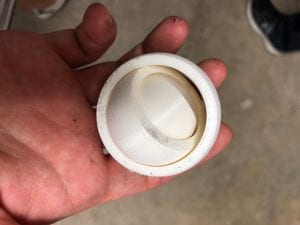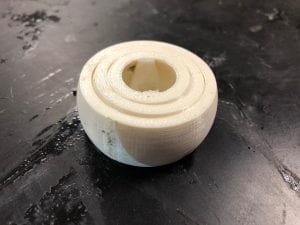When we were assigned to print an impossible object, an object that can only be made on a 3D printer, I knew that I wanted to print something encased in something else that spins or rolls in some way. I found the Gryo rotating rings on Thingiverse and immediately got to printing it. At first I had a hard time figuring out what size the original file I downloaded from Thingiverse was. I imported it into the program used to print objects on the free printers in the Maker Bar and scaled the rings down there so that I was sure that it fit inside the plastic cases we were given. However, I left the print settings on default and the printer generated a raft for my piece. After about 45 minutes of sanding and filing, I ended up freeing the outer ring from the raft, but the inner two rings were still connected. At this point I gave up on that print, since I proved that the rings would still rotate even after being scaled down. Next, I printed an unscaled version on the free printer to see if it would fit in the plastic case, since the first print seemed to have a lot of wiggle room. It didn’t, so I scaled everything down by .95 in MeshMixer. Finally, I reprinted the correctly scaled version on the free printer and the Fortus. The print took about 1 hour on the free printer and 2.5 hours on the Fortus.
Next, I printed an unscaled version on the free printer to see if it would fit in the plastic case, since the first print seemed to have a lot of wiggle room. It didn’t, so I scaled everything down by .95 in MeshMixer. Finally, I reprinted the correctly scaled version on the free printer and the Fortus. The print took about 1 hour on the free printer and 2.5 hours on the Fortus.


 Although the Fortus print did have supports, they weren’t inbetween the rings and didn’t affect the function of the object.
Although the Fortus print did have supports, they weren’t inbetween the rings and didn’t affect the function of the object.
Overall, I spent about 1 hour preparing and setting up the prints. The nice thing about 3D printing is that you don’t have to wait while the print is happening. I made 3 prints on the free printer and 1 on the Fortus. Assuming the free printer costs $1 per hour to use and I had to bring my own $20 roll filament, the Fortus costs $5 per hour to use, and I pay myself $10 an hour, the total cost comes out to about $25.50 + $18.50 of filament for the Fortus (calculated by OEDK website) = $44.
